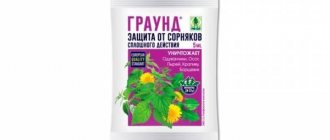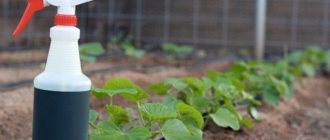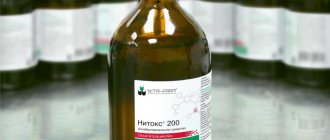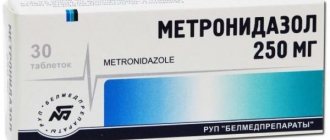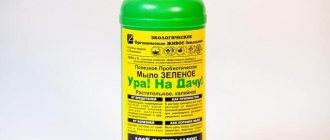» Gardening » Weeds » Lapis lazuli - effective weed control
0
27804
Article rating
Many gardeners have already tried the chemical Lazurit - it allows you to clear tomato and potato beds of weeds without harming the crops themselves. Before using the drug, you need to familiarize yourself with its description, principle of action, advantages and disadvantages.
- Contraindications for use
- Precautionary measures
- First aid
- Compatibility and storage conditions
- Customer Reviews
Lapis lazuli - effective weed control
Description, characteristics and features of the drug
The drug "Lazurit" is a universal remedy with a selective effect on weeds . It is used in the fight against unwanted vegetation in potato and tomato beds.
When deciding to use herbicides, each farmer takes into account the number of weeds on the site .
The herbicide is used in the fight against 50 types of weeds . The most common of them:
- quinoa;
- ambrosia;
- thistle;
- amaranth;
- pigweed.
Operating principle
The effectiveness of the drug is based on the content of the active substance metribuzin . 1 kg of solution contains 700 g of this substance. This concentration is detrimental to plants and soil, so Lapis Lazuli is diluted.
As soon as the drug hits the weed plant, it penetrates inside. The product is well absorbed into the stems and leaves, and when watered, it affects the roots. Metribuzin suppresses photosynthesis, interferes with the absorption of moisture, nutrients and oxygen, which is why the weed dies.
The effect of the drug begins immediately after its use . The weeds will begin to dry out within a week and will completely disappear from the area two weeks after treatment.
Advantages
The drug does not accumulate in plants and soil , therefore it is considered safe for humans and animals. Also, “Lapis Lazuli” does not interfere with the taste, growth and development of the crop, so the yield does not fall.
Main advantages:
- high permeability inside the plant;
- impact on annual and cereal weeds;
- long period of exposure;
- ease of preparation and use of the solution;
- effective against 50 different plant species;
- low cost - about 100 rubles. for 20 years
Manufacturers claim that the drug not only protects against weeds, but also develops potato resistance to cold weather and late blight.
Operating principle
Thanks to a set of additives, a continuous action systemic herbicide is well absorbed into the leaves and stems of weeds and affects the roots and rhizomes.
After a week, the weeds begin to dry out , and after a month they die off completely.
The product is well absorbed into the leaves and stems of weeds, affects the roots and rhizomes
How to dilute the product
Depending on the degree of weed growth in the previous season, the farmer decides how many times to treat in the new season.
With a small number of weeds, it is enough to carry out one procedure - dilute 10 g of Lazurite in 3 liters of water. The treatment is carried out by spraying until the potatoes emerge. The consumption of the working solution is 3 liters per 100 m².
If weed rhizomes grow rapidly, you will need to do two procedures. The second treatment is carried out when the sprouts reach a height of 5 cm. Use a working solution - 10 g per 9 liters of water. Liquid consumption - 9 liters per 300 m².
Important! When processing other crops, the concentration of the drug is changed.
Rules for diluting the drug:
- 1/5 of the liquid volume is poured into the spray tank.
- The herbicide is added.
- The solution is thoroughly stirred until the powder is completely dissolved.
- Then add water to the volume specified in the instructions.
"Lapis lazuli" is always stirred in a large amount of water.
When diluting the solution, take into account:
- plot size;
- soil condition;
- number of weeds.
After treatment, the unused solution is disposed of . The drug in a diluted state quickly loses its properties, so it cannot be stored.
Interesting things on the site:
How to plant potatoes under straw in the garden
What to do if potatoes don’t bloom and why this happens
Properties of Lapis Lazuli
A new selective herbicide is aimed at protecting potatoes and tomatoes from weeds. The active ingredient of lapis lazuli is metribuzin. Its action as a herbicide for potatoes is aimed at suppressing the growth of weeds through its effect on roots, foliage and even the development of seedlings. It suppresses the photosynthesis of weeds, depriving them of solar energy and has a detrimental effect on the root system. The main types of weeds are susceptible to its destructive effects, including harmful perennial weeds.
With all its activity, Lapis lazuli does not have a depressing effect on potato and tomato plants. This allows the use of herbicides against weeds on potatoes without causing damage to the main crop.
At the same time, it is important to apply Lapis Lazuli within the time period specified in the instructions, namely before the potatoes sprout and when they rise no more than 5 cm from the surface of the ground. This drug does not act selectively, but potatoes and tomatoes at an early stage of development are resistant to its action. Therefore, it is so important to carry out processing on time.
The effect of herbicides for potatoes begins after application to the soil. At the same time, it is important that after spraying in the given doses the lump of earth is not turned over. Recent light precipitation will help the particles of the substance penetrate quickly into the soil, but heavy rains will wash it into the lower layers, where Lapis Lazuli is ineffective. Dry periods also reduce the activity of metribuzin.
- use Lapis lazuli within the time limits specified in the instructions;
- do not turn over the cultivated soil;
- carry out processing in anticipation of rain;
- do not change the recommended dose of herbicide for potatoes.
Related article: Bombardier from the Colorado potato beetle for potatoes: dosage
Instructions for use
Experienced farmers often act proactively in the fight against weeds - they carry out treatment even before the weeds emerge. To prevent the crops from being damaged by the drug, it is important to deepen them.
Optimal temperature conditions for processing with “Lapis Lazuli” are +17…+24°С . Before the procedure, it is important to make sure that no precipitation is expected that day. Rain helps the product penetrate into the soil, where it loses its effectiveness. During the dry period, the activity of the active substance of the drug decreases.
First use
Before the first spraying, the soil is loosened and moistened. Then wait until the soil settles a little. Processing is carried out in dry, windless weather.
Per 1 m² of plot, the concentration of the drug is 1-1.5 kg. If weeds have already appeared, the solution is poured directly under the root of the plant or sprayed from a spray bottle.
The validity period of Lazurit depends on weather conditions . In good warm weather, the drug is effective for two months after treatment.
Important! The first treatment is carried out as soon as the air temperature warms up to +15°C.
After the procedure, you should not turn over the lump of earth . Digging up the area will result in the drug getting onto the buried potato tubers.
Treatment of sprouted weeds
If the first treatment was ineffective, the herbicide is used as soon as the seedlings reach a height of 5 cm . The concentration of the drug is reduced - 400 g is enough for 1 m².
Processing potatoes with Lapis Lazuli
To treat potato crops, use a solution concentration of 2.5 liters per 1 m². 20 g of Lazurit are diluted in 20 liters of water. The maximum concentration of metribuzin should not exceed 0.5%.
Important! The drug is suitable for all varieties of potatoes, except early ripening ones.
When early potatoes need processing, use 0.5 kg of Lazurit , for late varieties - 1.5 kg of the drug.
Factors affecting herbicide consumption:
- Soil fertility. In heavy soil the dose of the drug is maximum, in light soil it is minimum.
- Peat and humus content. If the site is located on peat soil or with a humus content of up to 6%, treatment is carried out after the appearance of weeds.
- Cultivar variety. When processing early potato varieties, the herbicide concentration is minimal.
Operating rules
The herbicide is a chemical agent, and therefore should be handled very carefully, following all points. When Lapis Lazuli is used correctly, neither people nor plants will be harmed by weeds.
- The time when you should start using the drug is before potato shoots, before they rise 5 cm above the ground (about 75% of shoots). As the crop grows, its protection against the chemical weakens - which is why timely treatment is so important.
- You should not loosen the soil after spraying so that the drug does not move to the lower layers, where its action is ineffective.
- To prevent heavy rainfall from washing the drug out of the ground, the seedlings should be hung. Drought also negatively affects the effect of metribuzin.
- A little irrigation is still necessary so that the particles of the substance spread in the soil.
- There is a set dosage of the diluted preparation for spraying, which must be strictly adhered to. For potatoes, according to the instructions, it is 250-300 liters per 1 ha. During the first treatment, 10 g of the substance is consumed per 3 liters of water per 100 m2. At the second stage, 10 g of the drug and 9 liters of water are added to the above ratio. The maximum concentration of the working solution should not be higher than 0.5%.
The two methods of using the herbicide differ in the number of stages of spraying procedures. The two-step method is described above: the one-time method involves the consumption of the product from 0.8 to 17 kg per hectare. Care must be taken to ensure that the poison does not get on the vegetable crop, so it should be hidden deep in the ground. Moisten the soil and wait for the ridges to settle.
Related article: Chicken manure as fertilizer and top dressing for potatoes
Peculiarities
Spraying is best done in dry weather
Potato plants can be treated with the weed killer Lazurit up to two times per season. For early varieties, experts advise using the minimum dose, the maximum - respectively, for late varieties planted in fertile soil. Lapis lazuli dissolves well when stirred in water.
Ideal weather conditions for Lapis lazuli to work are dry, with light rain allowed. It is applied to the soil in finished form, made immediately before use. The prepared solution cannot be stored. The effect of action is observed on average 15 days after treatment and fits within a period of two months. It is the only similar drug whose use is permitted in private households.
Application result
By applying Lapis Lazuli in a timely and technically correct manner, the farmer will be able to defeat not only the first, but also the second batch of weed pests. Once the potato tops close, it will be too late for annual weeds to spread. In addition to combating them, the product helps prevent diseases such as late blight, which negatively affects the yield and safety of the plant.
On peat and bog soils, treatment is carried out upon emergence. During a fungal disease of a plant, an attack by parasites, after experiencing frosts or problems with humidity, all actions are prohibited - only after recovery. There are also overly sensitive potato varieties that can be severely damaged during the baiting procedure.
Safety precautions for use
The drug only affects weeds . Vegetables treated with Lazurit do not pose a danger to people and animals. To prevent the chemical from damaging the potato tubers, they are deepened by 15-20 cm.
The herbicide has been assigned a third hazard class - harm to health can be caused during the treatment of beds.
Security measures:
- the procedure is not carried out if the wind speed reaches 5 m/s;
- It is prohibited to prepare the working solution in food containers;
- processing is carried out in protective equipment - mask, goggles, gloves, gown;
- Do not eat, drink or smoke while working with the drug;
- after the procedure, you need to take a shower, wash your work clothes and wash the spray bottle;
- It is prohibited to stay in the treated area for more than four hours.
The herbicide is of low risk to pollinating insects . But in order to avoid poisoning of bees, it is recommended to carry out treatment 2-3 km from the hives. The drug is prohibited to be used in the water protection fishery zone.
Important Tips
Do not under any circumstances exceed the amount of the drug in the mixture. On the contrary, in light and loose soils the concentration can be slightly reduced. The dosage indicated on the package is suitable for heavy soils. It is not advisable to use this substance in sandy soil or if there is a lack of humus. Also, do not use the product on soil that is too dry. If there are pests on the site, then first preventive measures are taken to eliminate them, and only then can the soil be treated with Lapis Lazuli.
What drugs is it compatible with?
To save product consumption and increase efficiency, the herbicide is combined with other drugs . In addition, Lapis Lazuli is not a fertilizer. If there is an imbalance of nutrients in the soil, even if there are no weeds, the harvest will not be abundant.
Important! When mixing drugs, the solution must be homogeneous.
"Lapis lazuli" is combined with insecticides, pesticides, fungicides, nematicides and acaricides .
When not to use
- When the soil contains less than 1% humus;
- On plantings that have suffered from plant diseases or have suffered from frosts or have mechanical damage, through which the active ingredient can penetrate into the cellular layers;
- When cultivated plants were planted early in the garden;
- On dry soils.
For small amounts of weeds, it is recommended to limit the use of herbicides, replacing them with manual weeding and subsequent mulching.
In what cases should it not be used?
The drug, despite its wide spectrum of action, is not recommended for use:
- on sandy soil;
- if the crop has suffered a disease;
- during sudden temperature changes;
- during drought;
- for processing early varieties;
- with a small number of weeds;
- if plants react poorly to herbicides.
Lapis lazuli for weeds: reviews
Every gardener wants to grow tasty and healthy vegetables on his plot. This task would not seem so difficult if not for these annoying weeds. To protect the harvest of potatoes and other crops, as well as to make your work easier, you can use special herbicides. These are substances that destroy weeds in the garden. “Lapis lazuli” is a modern remedy that helps get rid of unwanted plants. Further in the article we will look at the instructions for using Lapis lazuli against weeds, and also see all the advantages and disadvantages of this drug.
What should be the result after using Lazurit?
After using the drug, the weeds will begin to dry out within a week ; it will take from 14 to 30 days to completely disappear from the site. If the result is not achieved, an error may have been made in working with the herbicide.
Factors to consider:
- processing time;
- drug concentration;
- dosage for a single or repeated procedure;
- waiting time for the herbicide to take effect;
- security measures;
- weather.
The diluted drug cannot be stored . The solution is used within 24 hours. The shelf life of the sealed herbicide is 5 years.
Where to buy
You can buy Lapis Lazuli to prevent weed growth in almost any gardening store at an affordable price. Its release form is sachets of wettable powder (SP) with a volume of 10 and 20 g. This consistency has economic advantages: suspensions adhere well to plants and adhere firmly to them, so wasted powder is minimal. Instantly dissolves in water and does not form lumps. Shelf life is 5 years. The instructions for use provide recommendations on the use, storage and transportation of metribuzin, as well as how many times it should be used.
Reviews about the product
Gardeners leave mostly positive reviews about Lazurit. They note the availability, effectiveness and safety of the drug.
Marina, Krasnodar : “I used to fight weeds in the traditional way - weeding. After expanding the site, I tried Lapis Lazuli. A few days after the first spraying, all the excess grass had dried up. The procedure was repeated when new weed shoots were seen. After that, there was only one potato left in my beds. Satisfied with the herbicide."
Dmitry, Novokubansk : “I have large potato fields, so ordinary weeding cannot save the crop. A few years ago I tried Lapis Lazuli and was not disappointed. Now I only trust this product; I have never once had a herbicide spoil the quality of the crop. The drug kills weeds well and has a long-lasting effect.”
Gennady, Borovichi : “I use organic technologies on my site, but when the weeds take over, I switch to herbicides. “Lazurit” is the most effective - it is low-toxic, inexpensive, applied in minimal doses and does not inhibit potatoes. I start processing even before the crop sprouts. One procedure is enough for me.”
Compatibility and storage conditions
According to the manufacturer's instructions, this herbicide can be combined with other means of protection.
Some agronomists recommend making combined formulations of drugs that complement and enhance the overall effect.
Such complexes must be used immediately after preparation.
The shelf life of Lapis lazuli in sealed packaging is 5 years. Since the substance is toxic, it should be kept away from children and animals, as well as from food and drinking water. Permissible storage temperature: from -10°C to 40°C.
I am fighting weeds on potatoes.
Lapis lazuli. How to treat weeds
Part 1. In the potato field. We fight the weed lapis lazuli.
From what weeds and how to use girbecid Lazurit
Hello, dear friends.
Weed control in the country is one of the main procedures for caring for garden crops. After all, in a neglected area, not a single crop can fully develop and bear fruit. Currently, there are many drugs that can be used to quickly and easily get rid of weeds in the garden.
Lapis lazuli has proven itself well against weeds. The instructions for using this product are quite simple. Judging by numerous reviews, this is one of the most popular and effective drugs, preferred by many gardeners.
Lapis lazuli belongs to the group of systemic herbicides, the action of which extends to annual weeds. This product penetrates into the tissues of leaves and stems of plants, suppressing their photosynthesis. As a result, the weed becomes dull and dries out completely.
Remaining in the soil for a long time, this substance prevents the growth of new weeds. Lapis lazuli on potatoes and tomatoes is an excellent remedy that eliminates weeds without weeding, which promotes the active growth of useful vegetation and increases its productivity.
What weeds is Lapis Lazuli used for? This substance is effective against annual dicotyledonous and cereal crops: sow thistle, chamomile, dandelion, quinoa, cornflower, ragweed, wheatgrass and field mustard.
If you follow all the rules of use indicated on the packaging, this herbicide will not cause any harm to the future harvest and human health.
